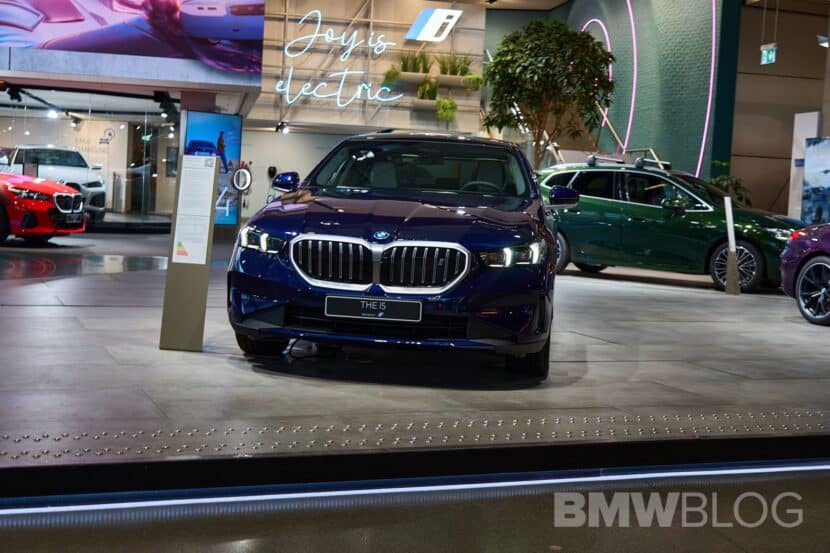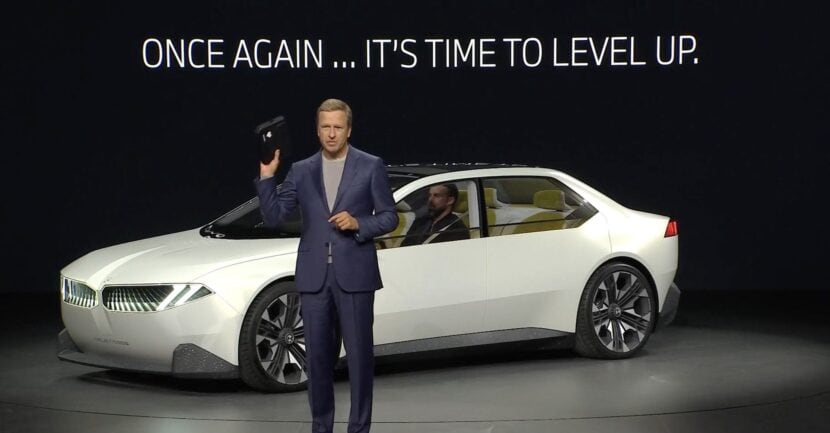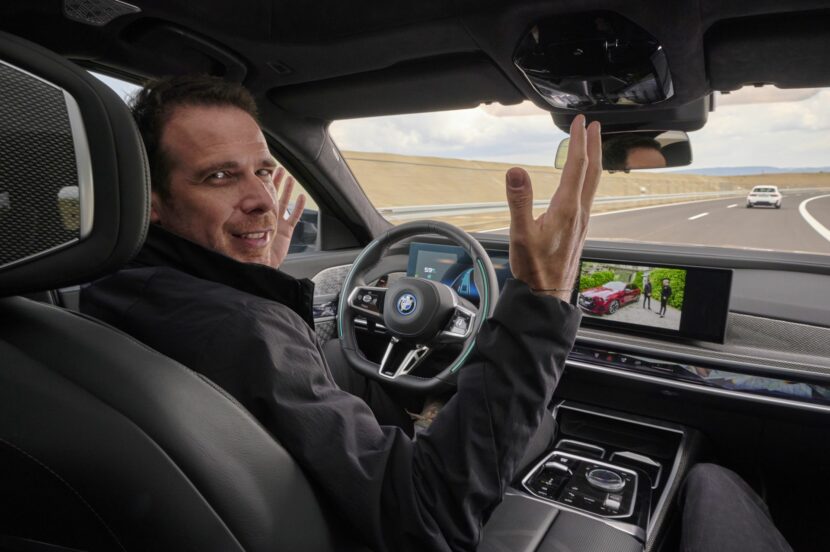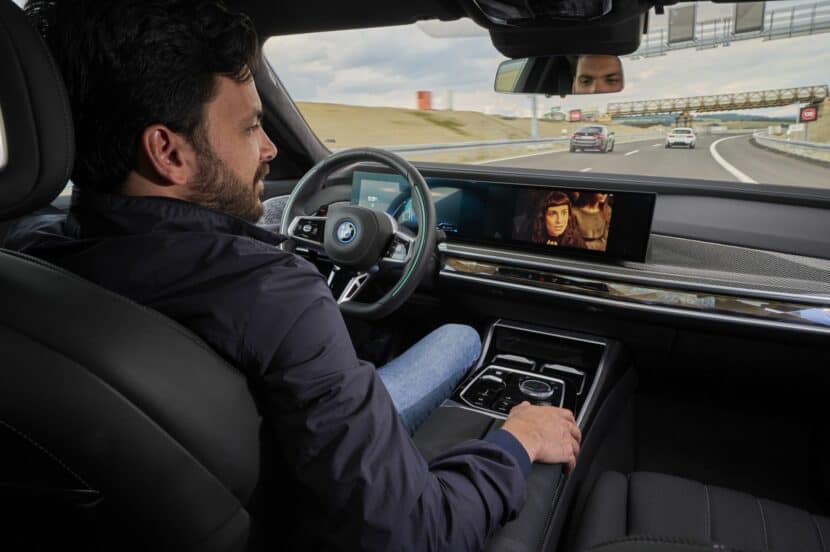Driving engagement and dynamics have always separated BMW vehicles from the rest. But how do those realities stack up against BMW’s mission to deliver fun-to-drive cars with the upcoming Neue Klasse? We sit down with Nicolai Martin, Head of BMW Driving Experience, for some insight. He talks to us about improving driver aids and how they allow BMW to continue making the Ultimate Driving Machine, especially in the context of the new technology brought forward by the EV-dedicated architecture.
Making Moves Forward with Driver Assistance Systems
“It’s no longer the case that you have a Parking Assistant or an Active Cruise Control,” Nicolai starts, “that so not intuitive or not worth it so you switch it off.” In this case, he’s praising the BMW i5. Earlier in the day, another BMW employee mentioned spending time with the car during their summer break. It was the first time they were “really impressed by driving assistance systems.”
According to Nicolai, the next generation focuses on safety and dynamics, seamlessly blending them. The idea is that enthusiasts can get their dose of fun while still having reliable and transparent help from the ADAS when they need to prioritize, say, a phone call. Ultimately, the new cars give drivers more choices – shift it yourself or leave it in auto, drive yourself or leave it to the car, etc. “Level 5 people movers, robo-taxis, this is not of interest to us,” Nicolai says. So, for now, the driver is still integral to BMW vehicles.
Enhancing the Driving Experience Through Technology
“It’s surprising for us to drive the i4 M50, then step into the new prototypes and see that you can really go beyond them,” Nicolai says when we bring up the high performance ceiling and overall capability of the i4 M50. What gives these experimental examples so much prowess? Technological superiority – no replacement for…er, computing displacement? While the i4 M50 is an advanced machine, it can’t compare to the new stuff. Nicolai explains that faster – and more centralized – ECUs allow for fractionally quicker responses regarding brake energy regeneration and other aspects of EV driving. BMW calls it the “Heart of Joy.”
“It’s by a factor faster. And, you can push to higher limits while being safe and stable, and use relevant customer benefits in terms of range.” Nicolai explains that six lateral-G sensors, carefully calibrated software, and other tech give new performance vehicles a higher ceiling than current offerings.
Level 3 Autonomy Debut Date
The newest Level 3 software and hardware debuts on the 7 Series in Germany later this year. But it doesn’t stop there. “Next year, we will see in Germany – in all derivatives – 5 Series, X5, X6, and X7, 7 Series, iX.” Great news for our friends in Deutschland. He goes on to say the enhanced heads-up display and trick lane change tech that’s debuted in the US means they don’t feel very pressured to bring anything to market too quickly. “We don’t have the pressure to roll out Level 3 to all regions as fast as possible because we have a very attractive, convenient offer with that Highway System.”
Nicolai continues. “We think we are super competitive in the US with Level 2+,” he says. It’s from firsthand experience. “You can drive – like I did on my own – from San Diego to LA without any interaction with the steering wheel.” With enhanced capabilities comes the enhanced need for drivers to be entertained, apparently.
“Now, when we start in Germany, Level 3 will offer YouTube, TV, and gaming in the vehicle,” he starts. “Because the customer at BMW should decide for Level 3 because he wants to consume the same content he can consume in a living room while driving.” The Ultimate Streaming Machine in the works too?
You’re Still the Driver, Kind of
When driving in Europe, a self-driving BMW’s liability is much different than in the States. “Here, if you fulfill the homologation, and have the official approval by the authority for Level 3, and there’s an accident with activated Level 3 where we have the responsibility, it’s still the insurance of the driver that takes the cost of that crash. He can think about taking us afterward,” Nicolai bluntly states.
“Then I would have to argue before the lawyer that we did the best, and the development, we can show our Positive Risk Balancing, our over 100 petabytes of data and everything.” If you were wondering, 1,024 terabytes make one petabyte, or about one quadrillion bytes of data. In the U.S., Nicolai is less optimistic. Each case is handled independently, potentially “a big amount of money, even if you argument in the right way.”
Level 4 Coming?
“For the end customer, Level 4 autonomy is dependent on two things: the speed of AI-driven development and range and resolution of the sensors and Lidar,” Nicolai states. Upcoming generations of Lidar can see up to 800 meters (2,600 feet) ahead, necessary for high-speed ADAS. Nicolai claims Waymo is technically the superpower in this space.
“It’s clear that they work on the software by themselves and so on, but on a system level, they have specific aspects which they couldn’t get on the market and so decided to do that on their own,” he says. Waymo now has what “others can only afford later,” which includes a 17-megapixel front camera – which “you cannot solve at any supplier,” Nicolai says. Additional Google-based resources put Waymo on the forefront of autonomy – at least for now. But it’s a glimpse at what larger OEMs will eventually put into motion.




